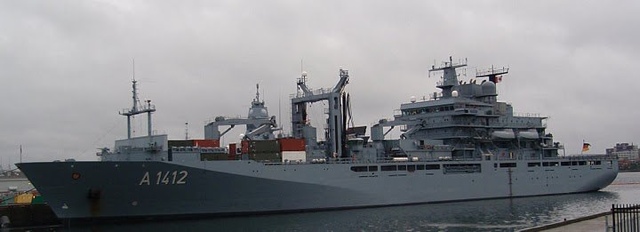Over the Lunch Hour, the supply Vessel Riverton Put into Halifax. Riverton is currently woirking for shell on their offshore exploration off Nova Scotia, and is shuttleing supplies back and forth from the siesmic vessles.
Yearly Archives: 2013
USCGC Morro Bay for a visit.
USCGC Morro Bay is a Bay Class Icebreaker, Homeported in New London, CT. She is 140′ long, ans was built in 1981. She arrived Saturday for a visit, and will be departing tommorow, June 4th. Unlike Most USCG vessels visiting, she is tied up at Tall Ships Quay, and not at the dockyard.
Bay Class vessels are stationed mainly in Northeast U.S. and Great Lakes. Although specifically desinged for ice breaking duties, they also perform law enforcement, environmental protection, search & rescue operations and support for aids to navigation activities.
WTGBs use a low-pressure-air hull lubrication or bubbler system that forces air and water between the hull and ice. This system improves icebreaking capabilities by reducing resistance against the hull, reducing horsepower requirements.
New support ships to be German Berlin Class
The Government of Canada today announced that a ship design for the Joint Support Ships being acquired for the Royal Canadian Navy has been selected, as part of the National Shipbuilding Procurement Strategy.
The selection of the Joint Support Ship design was conducted through a transparent assessment process, involving multiple government departments and third party advisors, based on three criteria: operational capability, affordability, and the cost and schedule risks associated with building the ship. The process was monitored by audit firm KPMG, as an independent third-party. First Marine International, a recognized firm of shipbuilding experts, provided ship construction costing expertise.
Two viable ship design options were commissioned for the Joint Support Ships: an existing design and a new design by BMT Fleet Technology. Based on rigorous analysis and assessments by government officials and military experts, the proven, off-the-shelf ship design from ThyssenKrupp Marine Systems Canada was selected as the best design option for the Royal Canadian Navy and for Canadian taxpayers.
Canada will provide the design to Vancouver Shipyards Co. Ltd, to review in preparation for actual production. This design development work will be led by Vancouver Shipyards Co. Ltd., as part of the Joint Support Ship definition contract to be negotiated between Canada and the shipyard. Once these steps are completed, Canada will acquire the required licensing for the ship design. This license will enable Canada to use the ship design and build, operate, and maintain the Joint Support Ships – right in here in Canada. This effort will also enhance technical skills and knowledge among Canadian shipyard staff, to be leveraged as the shipyard builds the subsequent ships assigned under the National Shipbuilding Procurement Strategy.
The Joint Support Ships, which will be built by workers at Vancouver Shipyards Co. Ltd, will supply deployed Naval Task Groups with fuel, ammunition, spare parts, food and water. They will also provide a home base for maintenance and operation of helicopters, a limited sealift capability, and support to forces deployed ashore.
Aivik
The RORO Heavy Lift Vessel Aivik Arrived at Pier 29 this morning, and has evidently been sold. Her Canadian Registry has been closed, and she is in the process of Reflagging.
She was owned and Operated by NEAS – Nunavut Eastern Arctic Shipping, and was a very versitle ship, given her heavy duty 155mt derricks, RORO Ramp and Ice class hull. She is likely being replaced with a Pure container vessel.
NEAS serves the various small communities of the arctic. For More on this Vessel, See Shipfax.
go fish.
Atlantic Cartier’s replacement, Part 2
With Yesterdays arrival of CSAV Rungue, the container portion of Atlantic Cartiers run was taken care of. Today Broght the Arival of the Pure Car truck Carrier (PCTC) GRAND BENELUX. Painted in the Colors of the Grimaldi group, She is operated by ACL’s Parent company, and stopped at Autoport to Replace the RO-RO capability that is not available with the container ship.
FGS Planet – here for a working visit
FGS Planet is here for more then just a visit. As a research vessel she is the german equivalent to our own CSAV Quest. She has some time scheduled on the sound range in Bedford Basin On the 26th from and again overnight on the 27th between 2200 to 0800 on the 28th.
Quest spent some time in Europe last year working on various research projects.
CSAV RUNGUE to replace Atlantic Cartier
On Sunday, CSAV RUNGUE is scheduled to stop at fairview cove for Atlantic Container Lines.
She is likely the charter vessel to replace Atlantic Cartier, which was damaged by fire.
She is a conventional container vessel, without a RO-RO capability. it is likely then that delays will be added to ro-ro cargo on ACL’s schedule. ACL’s schedule also show GRANDE ANGOLA arriving June 10th. She is a Con-ro ship, simalar to ACL’s vessels, and owned by thier parent Grimaldi group.
Return of an old Friend – Tall Ship Liana’s Ransom
Today broght the arrival of the Scooner Liana’s Ransom. She is tied up at Sackville Landing. She worked as a tour boat in Halifax Between 2007 and 2010, before heading South and offerign tours out of the British Virgin Islands. She is on her way to Tall Ship Festival in Miramichi NB (http://www.miramichitallships.ca/) May 31 – June 2
She will be Joined by PeaceMaker and Unicorn, Both Currently tied up in Lunnenburg, Pride of Baltimore II (Currenlty 90nm SW of Halifax) and HMCS Sumerside, and Theodore II
Liana’s Ransom is an 85 foot, steel hulled schooner built in Houston, Texas. Construction began in 1998, but she was not launched until 2002. She was bought by the current owners in the spring of 2005 in Seabrook, Texas. She was sailed home to Nova Scotia in the fall of 2006, the 2500 nautical mile voyage taking 20 days. Originally designed as a Staysail schooner, she was converted to a gaff rigged, square topsail schooner over the winter of 2006/2007.






